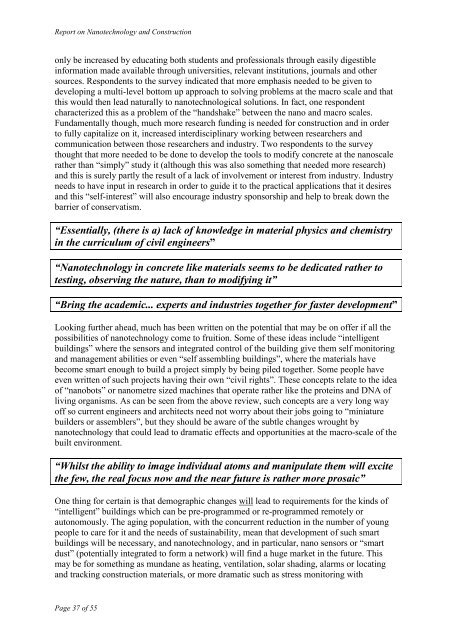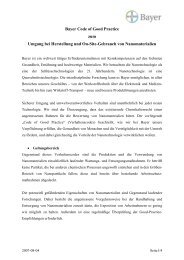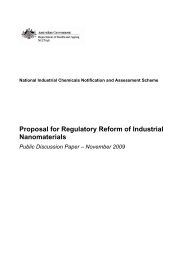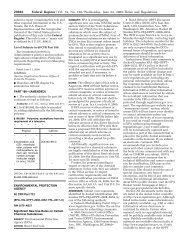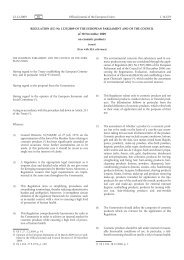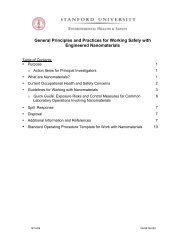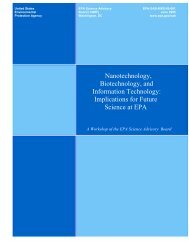Nanotechnology and Construction
Nanotechnology and Construction
Nanotechnology and Construction
Create successful ePaper yourself
Turn your PDF publications into a flip-book with our unique Google optimized e-Paper software.
Report on <strong>Nanotechnology</strong> <strong>and</strong> <strong>Construction</strong><br />
only be increased by educating both students <strong>and</strong> professionals through easily digestible<br />
information made available through universities, relevant institutions, journals <strong>and</strong> other<br />
sources. Respondents to the survey indicated that more emphasis needed to be given to<br />
developing a multi-level bottom up approach to solving problems at the macro scale <strong>and</strong> that<br />
this would then lead naturally to nanotechnological solutions. In fact, one respondent<br />
characterized this as a problem of the “h<strong>and</strong>shake” between the nano <strong>and</strong> macro scales.<br />
Fundamentally though, much more research funding is needed for construction <strong>and</strong> in order<br />
to fully capitalize on it, increased interdisciplinary working between researchers <strong>and</strong><br />
communication between those researchers <strong>and</strong> industry. Two respondents to the survey<br />
thought that more needed to be done to develop the tools to modify concrete at the nanoscale<br />
rather than “simply” study it (although this was also something that needed more research)<br />
<strong>and</strong> this is surely partly the result of a lack of involvement or interest from industry. Industry<br />
needs to have input in research in order to guide it to the practical applications that it desires<br />
<strong>and</strong> this “self-interest” will also encourage industry sponsorship <strong>and</strong> help to break down the<br />
barrier of conservatism.<br />
“Essentially, (there is a) lack of knowledge in material physics <strong>and</strong> chemistry<br />
in the curriculum of civil engineers”<br />
“<strong>Nanotechnology</strong> in concrete like materials seems to be dedicated rather to<br />
testing, observing the nature, than to modifying it”<br />
“Bring the academic... experts <strong>and</strong> industries together for faster development”<br />
Looking further ahead, much has been written on the potential that may be on offer if all the<br />
possibilities of nanotechnology come to fruition. Some of these ideas include “intelligent<br />
buildings” where the sensors <strong>and</strong> integrated control of the building give them self monitoring<br />
<strong>and</strong> management abilities or even “self assembling buildings”, where the materials have<br />
become smart enough to build a project simply by being piled together. Some people have<br />
even written of such projects having their own “civil rights”. These concepts relate to the idea<br />
of “nanobots” or nanometre sized machines that operate rather like the proteins <strong>and</strong> DNA of<br />
living organisms. As can be seen from the above review, such concepts are a very long way<br />
off so current engineers <strong>and</strong> architects need not worry about their jobs going to “miniature<br />
builders or assemblers”, but they should be aware of the subtle changes wrought by<br />
nanotechnology that could lead to dramatic effects <strong>and</strong> opportunities at the macro-scale of the<br />
built environment.<br />
“Whilst the ability to image individual atoms <strong>and</strong> manipulate them will excite<br />
the few, the real focus now <strong>and</strong> the near future is rather more prosaic”<br />
One thing for certain is that demographic changes will lead to requirements for the kinds of<br />
“intelligent” buildings which can be pre-programmed or re-programmed remotely or<br />
autonomously. The aging population, with the concurrent reduction in the number of young<br />
people to care for it <strong>and</strong> the needs of sustainability, mean that development of such smart<br />
buildings will be necessary, <strong>and</strong> nanotechnology, <strong>and</strong> in particular, nano sensors or “smart<br />
dust” (potentially integrated to form a network) will find a huge market in the future. This<br />
may be for something as mundane as heating, ventilation, solar shading, alarms or locating<br />
<strong>and</strong> tracking construction materials, or more dramatic such as stress monitoring with<br />
Page 37 of 55


